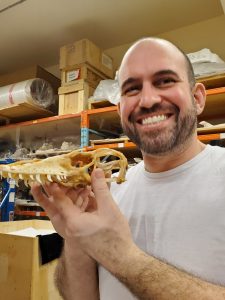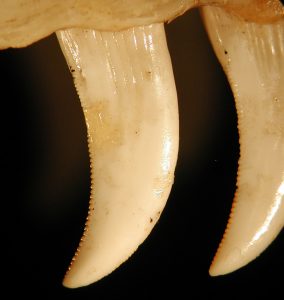 Domenic D’Amore, Associate Professor of Biology at Daemen University, co-authored a research paper published by Nature Ecology & Evolution that presented his findings about iron in Komodo dragon teeth.
Domenic D’Amore, Associate Professor of Biology at Daemen University, co-authored a research paper published by Nature Ecology & Evolution that presented his findings about iron in Komodo dragon teeth.
After connecting with fellow colleague, Aaron LeBlanc, at the Society of Vertebrate Paleontology Conference in 2022, D’Amore embarked on a year-and-a-half research project with LeBlanc to explore the discoloration of reptilian teeth and confirm the presence of iron in their serrations.
“I’ve been interested in Komodo dragons since graduate school,” said D’Amore. “Meeting Aaron at the paleontology conference was serendipitous. Had it not been for the faculty travel grant I received, I never would have attended the conference and would have missed the opportunity to work on this important research paper.”
During the research process, D’Amore spent a week at the American Museum of Natural History in New York – his favorite part of the process – surveying its extensive monitor lizard collection and reviewing every species with serrated teeth. “It was exciting to look under a microscope, see the orange pigmentation, and discover the presence of iron in the teeth.”

He added, “I knew Komodos had iron in their teeth from day one because of the discoloration. It’s clearly present in a functional part of the teeth to make them stronger. In addition, iron doesn’t dissolve as much as calcium so we can also hypothesize that it protects teeth from chemicals in the flesh Komodos eat that otherwise might have degraded their serrations more quickly.”
D’Amore was honored to be published in a prestigious journal like Nature Ecology & Evolution. Next on his research agenda: Exploring his hypothesis on why birds, turtles, and other animals lost their teeth.
